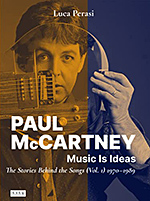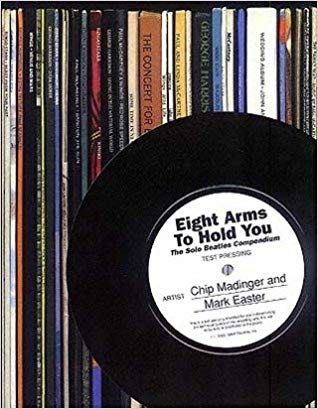- Album Songs recorded during this session officially appear on the McCartney LP.
- Studio:
- Morgan Studios, London, UK
Timeline
More from year 1970
Some songs from this session appear on:
Spread the love! If you like what you are seeing, share it on social networks and let others know about The Paul McCartney Project.
About
In October 1969, after John Lennon told the other Beatles he was leaving the band, Paul and Linda McCartney escaped London to isolate themselves and their two daughters (Heather and baby Mary) on their Scottish farm. It was a period of depression for Paul.
They stayed in Scotland from late October to mid-December 1969. They then went on holiday in Antigua, where the photograph used for the cover of the “McCartney” album was taken. Back in London, in late December, Paul started recording his first solo album at home.
On February 12, 1970, he moved to Morgan Studios, where he was assisted by engineer Robin Black (who would later be known for his work on various Jethro Tull albums). Paul has previously visited Morgan Studios when he produced “Goodbye” for Mary Hopkin in March 1969.
From Wikipedia:
On 12 February, McCartney took his Studer tapes to Morgan Studios, in the north-west London suburb of Willesden, in order to copy all the four-track recordings onto eight-track tape, to allow for further overdubbing. Keen to maintain secrecy about the project, McCartney worked at Morgan under the pseudonym “Billy Martin”. By this point, he had also taped “Junk” and “Teddy Boy” at Cavendish Avenue, two songs he began writing during the Beatles’ 1968 visit to India and had rehearsed with the band in January 1969. The other recordings transferred to eight-track included “Glasses” – a sound effects piece featuring “wineglasses played at random“, in McCartney’s description – and “Singalong Junk“, an instrumental version of “Junk” to which he now added a strings part played on a Mellotron. Among other overdubs on these eight-track mixes, McCartney supplied a vocal to the previously instrumental “Oo You“.
While at Morgan, he also taped “Hot as Sun“, a “Polynesian-influenced” instrumental dating from the late 1950s, according to author Bruce Spizer, and “Kreen-Akrore“, which Sounes describes as an “experimental percussion track“. Begun on 18 February, “Kreen-Akrore” was McCartney’s attempt to sonically describe a hunt by the Kreen-Akrore tribespeople of the Brazilian Amazon, after he had watched an ATV documentary on their way of life. Amid musical interludes featuring electric guitar, organ and piano, McCartney used a bow and arrow he purchased at the Knightsbridge department store Harrods, according to engineer Robin Black. The latter was among the few people who knew that McCartney was making a solo album.
On February 21, 1970, he moved to the more familiar Abbey Road Studios, to complete the recording and mixing of the new album. He would then return to Morgan Studios to complete the mastering of his album, on March 21.
When we had to go to the studios, Linda would make the booking and we’d take some sandwiches and a bottle of grape juice and put the baby on the floor and it was all like a holiday. So, as a natural turn of events, from looking for something to do, I found that I was enjoying working alone as much as I had enjoyed the early days.
Paul McCartney – From interview to Evening Standard by Ray Connolly, April 1970
You recorded your first album (McCartney) under the pseudonym BILLY MARTIN.
Well, sometimes if you don’t want people to know that you’re recording at a place – it’s quite widely done now – you use a fake name. For two reasons, really: fun and privacy. I think there’s a big character in American baseball called Billy Martin so that’s where the name came from.
Paul McCartney – Interview with Club Sandwich N°62, Spring 1992
Home was being natural, being myself. I either made it at home – I got a machine from EMI, a four-track – or went down to a little studio, Morgan in Willesden, just working with one engineer. Me and Lin and the baby in the control room. It was joyous. That was exciting, you know? Newlyweds. If you’re lucky, it’s a great few years. Young, married life is a very special time.
Paul McCartney – From “Conversations with McCartney” by Paul du Noyer
It was great seeing Paul play all the instruments. Paul recorded the overdubs fairly straightforward, he knew what he was going to do. Sometimes Paul would describe a particular sound he wanted… Paul made everything seem easy showing what a master of his craft he was!
Robin Black – Engineer – Interview from “Paul McCartney: Recording Sessions (1969-2013)” by Luca Perasi
Last updated on April 9, 2022
Songs recorded
1.
2.
Written by Paul McCartney
Tape copying • Tape copy of Studer four-tracks tape to eight-track
3.
4.
Written by Paul McCartney
Tape copying • Tape copy of Studer four-tracks tape to eight-track
5.
Written by Paul McCartney
Recording • "A song written in about 1958 or 9 or maybe earlier, when it was one of those songs that you play now and then. The middle was added in Morgan Studio, where the track was recorded recently. 1 acoustic guitar. 2 electric guitar. 3 drums. 4 rhythm guitar. 5 organ. 6 maracas. 7 bass. 8 bongos." Track-by-track commentary by Paul McCartney, 1970
6.
Written by Paul McCartney
Recording • "Originally written in India at Maharishi’s camp and completed bit by bit in London. Recorded vocal, two acoustic guitars and bass at home and later added to (bass drum, snare with brushes, and small xylophone and harmony) at Morgan."
7.
Written by Paul McCartney
Recording • "The first three tracks were recorded at home as an instrumental that might someday become a song. This, like Man We Was Lonely, was given lyrics one day after lunch just before we left for Morgan Studios, where it was finished that afternoon. Vocals, electric guitar, tambourine, cow bell and aerosol spray were added at Morgan and it was mixed there. On the mix, tape echo was used to move feedback from guitar from one side to another."
8.
Written by Paul McCartney
Recording • "Another song started in India and completed in Scotland and London, gradually. This one was recorded for Get Back film but later not used. Rerecorded partly at home…(guitar, voices and bass)…and finished at Morgan. Linda and I sing the backing harmonies on the chorus and occasional oos."
9.
Written by Paul McCartney
Recording • "This was take 1, for the vocal version, which was take 2, and a shorter version. Guitars, and piano and bass, were put on at home, and the rest added at Morgan Studios. The strings are Mellotron, and they were done at the same time as the electric guitar, bass drum, and sizzle cymbal."
10.
11.
12.
13.
14.
Feb 18, 1970 • Recording "Kreen - Akrore"
Staff
Musicians on "Hot As Sun"
- Paul McCartney:
- Acoustic guitar, Organ, Maracas, Bass, Drums, Bongos, Electric guitar
Musicians on "Junk"
- Paul McCartney:
- Acoustic guitar, Xylophone, Bass, Vocals, Drums
Musicians on "Oo You"
- Paul McCartney:
- Cow bell, Vocals, Electric guitar, Tambourine, Aerosol spray
Musicians on "Singalong Junk"
- Paul McCartney:
- Bass, Drums, Piano, Mellotron, Electric guitar
Production staff
- Paul McCartney:
- Producer
- Robin Black:
- Engineer
Going further
Paul McCartney: Music Is Ideas. The Stories Behind the Songs (Vol. 1) 1970-1989
With 25 albums of pop music, 5 of classical – a total of around 500 songs – released over the course of more than half a century, Paul McCartney's career, on his own and with Wings, boasts an incredible catalogue that's always striving to free itself from the shadow of The Beatles. The stories behind the songs, demos and studio recordings, unreleased tracks, recording dates, musicians, live performances and tours, covers, events: Music Is Ideas Volume 1 traces McCartney's post-Beatles output from 1970 to 1989 in the form of 346 song sheets, filled with details of the recordings and stories behind the sessions. Accompanied by photos, and drawing on interviews and contemporary reviews, this reference book draws the portrait of a musical craftsman who has elevated popular song to an art-form.
Eight Arms to Hold You: The Solo Beatles Compendium
We owe a lot to Chip Madinger and Mark Easter for the creation of those session pages, but you really have to buy this book to get all the details!
Eight Arms To Hold You: The Solo Beatles Compendium is the ultimate look at the careers of John Lennon, Paul McCartney, George Harrison and Ringo Starr beyond the Beatles. Every aspect of their professional careers as solo artists is explored, from recording sessions, record releases and tours, to television, film and music videos, including everything in between. From their early film soundtrack work to the officially released retrospectives, all solo efforts by the four men are exhaustively examined.
As the paperback version is out of print, you can buy a PDF version on the authors' website



Contribute!
Have you spotted an error on the page? Do you want to suggest new content? Or do you simply want to leave a comment ? Please use the form below!